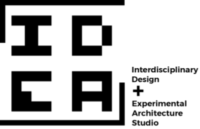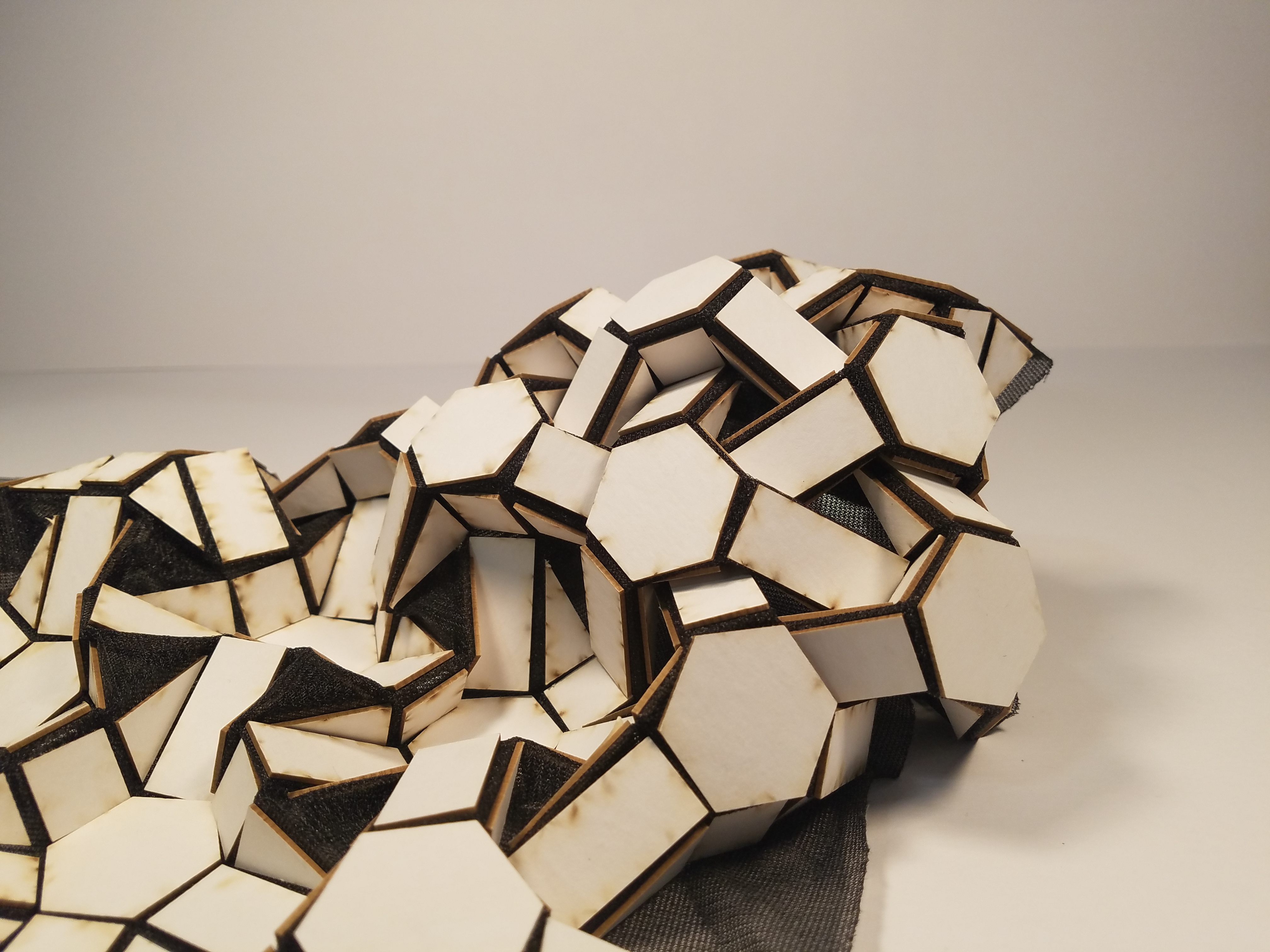Pneumatic Muscles: Kinetic Surfaces
Mathew Lombardo
This project investigates the kinetic nature of origami folding patterns as a preliminary method of understanding the concept of structural systems and their relationship to dynamism. Origami folding techniques met through the usage of specific folds have the ability to give sheets of paper an exponentially greater structural capability than their unfolded counterpart, yet they also propose unique ambiguity through form. Origami structures have the capability of complete surface manipulation due to the flexibility between each fold: The scalability of the origami folds also holds the potential of being built full size as a reliable testing strategy.
The Origami Module: As a developed system, Each origami module consists of a large number of parts, all that contribute to its proper movement. Here, an extensive set of 3d printed iterative pieces were used to explore movement and actuation. Starting from simple clips that allowed the module’s legs (long edges) to be wired together, and finalizing upon different pneumatic hoses, connectors, hinges, and arms that all moved fluidly, the module’s actuation process was highly iterative.
Pneumatic Actuation: Lightweight, compact, and easy to use, pneumatic forms of actuation proved a viable avenue for study into the origami modules’ actuation. Using what is called a Pneumatic Air Muscle, the legs of the origami modules were able to be retracted in towards its center, creating the actuation effect desired. Shown on the left are various study model iterations of understanding the proportions, parameters, and capabilities of the air muscles when attached to the module in different ways. The Pneumatic air muscle actuation required the use of an air pump to operate. At an individualized, smaller scale a simple sporting equipment hand pump was used. When air is pumped into the muscle, its inner membrane expands, but its outer membrane decreases in length. Using party animal balloons and plastic cable sleeving, custom air muscles could be made that operated to
a satisfactory level. When the party balloon expands, the cable sleeving’s outer diameter increases, which causes its length to shrink due to its weaved assembly.
Now that the pneumatic muscle system was able to power the individual module’s transformative properties, improvement could commence. Eventually, as more modules are added, a compressor became necessary to power the activation, due to its increased rate of pumping air as well as its capability of air pressure in psi. This opened up multiple avenues for the module to fail, as air seals were consistently broken, hinging systems wore away too quickly, and overall actuation showed little variance in transformative qualities. With studies in both the digital and the physical modeling scales occurring simultaneously, the project progressed slowly until a major breakthrough was discovered. Continuous ambiguity of the prototype finally led to insight towards the application and implementation of the kinetic material system.
After several iterations of the prototype at a sketch model quality, the final prototype was realized. At the same time, the project took on multiple applications, as a dynamic system such as this held an impressive range of actuation. The finalized material system could potentially take on the assumption of any building surface. As a wall and opening system, it could potentially open and close based upon movement of people, with ranges of openness and closedness, as well as the ability to direct the movement of people in and out of a space. It can also serve as an adaptive canopy system suspended on a set of rolling columns, that move as the material system moves. More applications would come to follow, as the material systems qualities may yet inform new utility.
Assembly: The final prototype assembly required a plethora of pieces per each module. Each module required 26 solid panels(13 per side), 9 custom 3D printed pieces (1 air splitter, 1 fastening plate, 3 end connectors, 3 plastic hinge brackets, and a small series of angled standoffs that prop the plastic arms in just the right angle), 3 Pneumatic Air muscles, and teflon tape to ensure proper air seals. The total assembly per module is assembled between a layer of fabric, printed upon using dye sublimation processes.
Axial relationship: The final working prototypes show the axial relationships held between each module, where a set of 3 parallel lines show its potential movement. These 3 axes dictate the directions of rigidity within the prototype, and perpendicular intersections to these axes between each module show where all hinging actions occur. In order to maintain this relationship, as well as the proportional spaces between each panel, slight offsets were added to the final prototypes that keep certain panels spaced from each other. This ensures that the folds are kept towards specified directions up on activation.
Application Potential: As an architectural material system with dynamic qualities, STRIA’s most viable application lies within adaptive wall structures. Seen above, (Fig. 20), the wall system can be clas upon the exterior (or interiors) of buildings and act as an adaptive entry system. When employed upon a space that sees great variances in population and traffic, like a museum space, the system has the potential to account for increased traffic flows, the ability to direct traffic, and the ability to control interior climate by means of ventilative and shaoding control. As an architectural system, STRIA breaks the contemporary interpretation of a static architectural surface. By turning surfaces that were once interpreted as stagnant and permanent into adaptive, living structures, we can effectively redefine the formal typologies and architrectonic nature of any surface we observe. Using dynamic material systems as a replacement to the standard and static counterparts allows for an entirely new way of envisioning and interpreting our perceptions of barriers, solids, voids, and spaces.










![Exploded plan [Converted] copy](https://ideastudo.com/wp-content/uploads/2021/06/Exploded-plan-Converted-copy-1000x866.png)
![STRIA Group [Converted]](https://ideastudo.com/wp-content/uploads/2021/05/STRIA-Group-Converted-1000x912.png)












